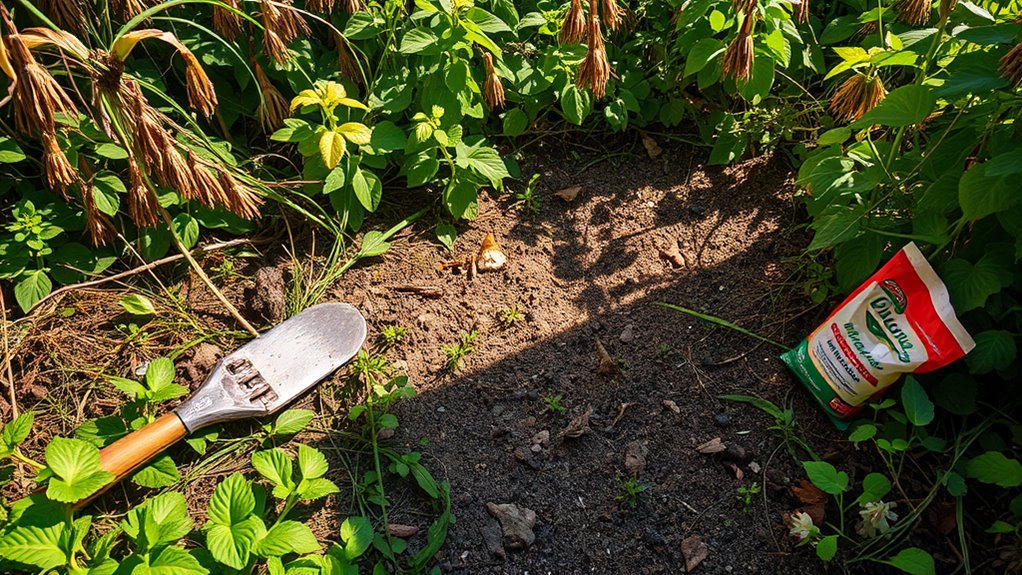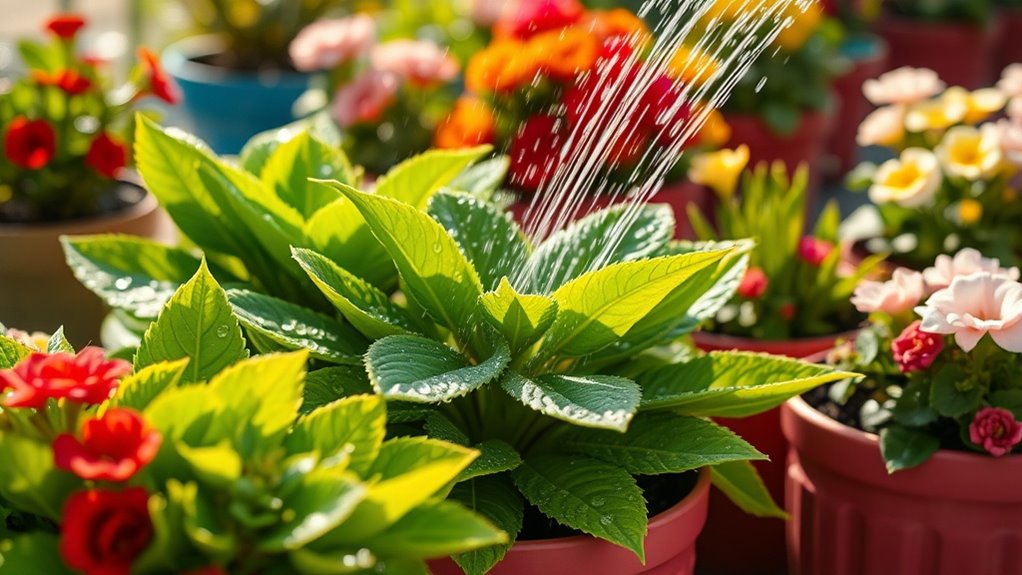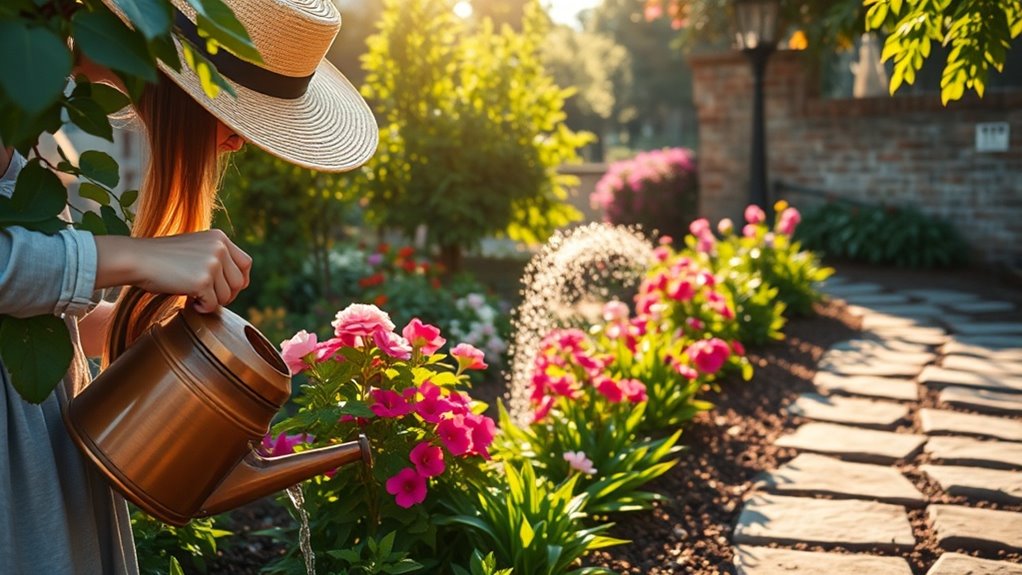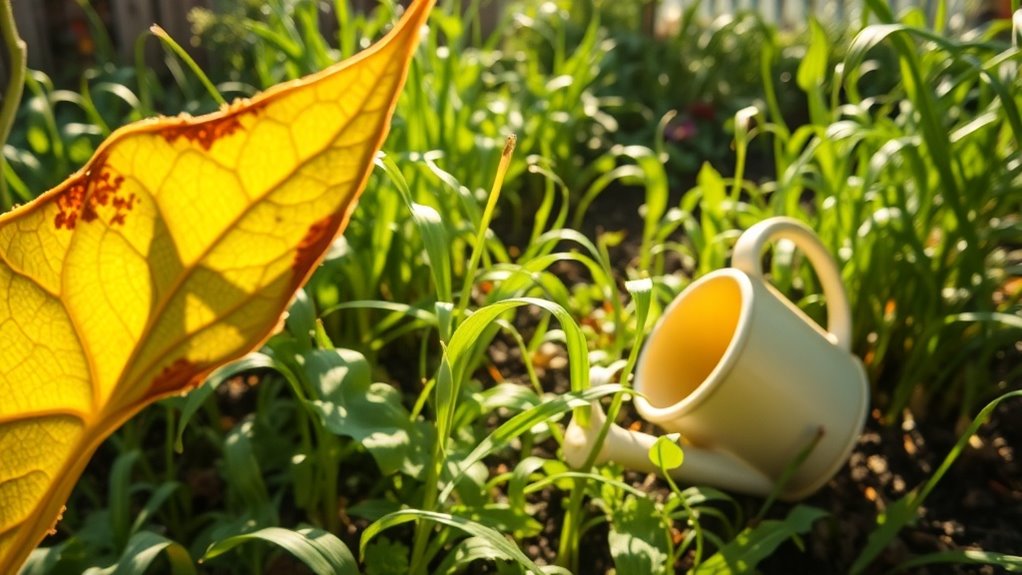These Gardening Mistakes Waste Time and Money
You might not realize how easily simple gardening mistakes can drain your resources. Overwatering, poor soil quality, and timing issues can all sabotage your hard work. Choosing the wrong plants for your climate can lead to disappointment, while neglecting pests can spell disaster. Each misstep costs time and money, but with careful planning and awareness, you can avoid these pitfalls. Let’s explore these common errors and how to steer clear of them.
Key Takeaways
- Overwatering can suffocate roots, promote root rot, and lead to nutrient loss, resulting in unhealthy plants and wasted resources.
- Ignoring soil quality can stunt growth, reduce yields, and increase pest problems, requiring time and money to rectify.
- Planting at the wrong time can lead to poor growth and harvests, wasting seeds and effort on unproductive crops.
- Choosing inappropriate plants for your climate can result in failure and disappointment, wasting both time and investment in unsuitable species.
- Neglecting pest control and proper garden layout can lead to disease and overcrowding, ultimately wasting time and resources on struggling plants.
Overwatering and Its Consequences
Have you ever wondered how overwatering can impact your garden’s health? It’s one of the most common gardening errors you can make.
When you saturate the soil, roots can suffocate, leading to reduced oxygen levels. This promotes root rot, a condition that destroys plants from the inside out.
Additionally, overwatering washes away essential nutrients, leaving your plants malnourished and weak.
You might notice yellowing leaves or stunted growth as signs of distress. Furthermore, understanding proper hydration techniques can significantly improve your plants’ resilience against overwatering.
To maintain a thriving garden, it’s crucial to monitor moisture levels and adjust your watering schedule accordingly. Avoiding overwatering will save you time, money, and frustration in the long run.
Ignoring Soil Quality
What happens when you ignore soil quality in your garden? You risk stunted growth, poor yields, and increased pest problems. Healthy plants depend on nutrient-rich, well-draining soil.
When soil lacks essential nutrients or has poor structure, your plants struggle to thrive. This leads to wasted time and money on seeds, fertilizers, and water. Testing your soil helps identify deficiencies and allows you to amend it appropriately. Incorporating organic matter, such as compost, can enhance soil health, promote beneficial microorganisms, and improve water retention. Additionally, signs of struggling soil can help you recognize when your garden needs attention.
Don’t overlook soil quality; it’s the foundation for a successful garden that flourishes rather than falters.
Planting at the Wrong Time
When should you plant your seeds for the best results? Timing is critical; planting too early or late can lead to poor growth. Each plant has an optimal growing season, and understanding these windows can save you time and money. Use this table to guide your planting schedule:
| Plant Type | Optimal Planting Time |
|---|---|
| Tomatoes | Late Spring |
| Carrots | Early Spring |
| Peppers | Late Spring |
| Kale | Early Spring |
| Zucchini | Late Spring |
Additionally, knowing the optimal growing season for each type of plant can help ensure a successful harvest.
Choosing Inappropriate Plants for Your Climate
Planting at the right time is only one piece of the gardening puzzle; selecting plants that suit your climate is just as vital. If you choose species that thrive in a different environment, you’re setting yourself up for disappointment.
Consider your local temperatures, humidity levels, and soil conditions. Research native plants, as these are often adapted to your region’s challenges. For example, planting tropical species in a temperate zone is a recipe for failure. Additionally, be sure to check for ideal crops for this month to maximize your chances for a successful harvest.
Neglecting Pest Control
When you overlook pest control, you risk your plants’ health and productivity. Identifying common pests early can save you a lot of trouble, as can implementing preventative strategies. Utilizing eco-friendly pest control methods can help you eliminate unwanted insects while promoting a safe and sustainable living environment.
Identifying Common Pests
How can you effectively identify common pests before they wreak havoc on your garden?
Start by regularly inspecting your plants, focusing on the undersides of leaves and stems.
Look for signs like tiny holes, discoloration, or webbing.
Familiarize yourself with common pests in your region, such as aphids, spider mites, and caterpillars.
Use sticky traps or magnifying glasses to get a closer look at small intruders.
Document your findings and compare them to online resources or local extension services.
The sooner you can identify a pest, the easier it’ll be to manage their impact on your garden.
Preventative Pest Strategies
Identifying pests is just the first step; neglecting pest control can lead to significant damage in your garden. Implementing preventative strategies is crucial.
Start by rotating crops to disrupt pest life cycles, and maintain healthy soil to support robust plants. Regularly inspect your plants for early signs of infestation, and consider using companion planting to naturally deter pests. Utilize barriers like row covers and traps to protect vulnerable species. Don’t forget to keep your garden clean, eliminating debris that can harbor pests.
Failing to Plan Your Garden Layout
When you fail to plan your garden layout, you miss crucial factors like sunlight exposure and plant spacing. Properly assessing these elements ensures that your plants receive adequate light and room to grow, which is vital for their health. Additionally, considering companion planting can enhance growth and deter pests, making your garden more productive overall. For instance, pairing tomatoes with basil and peppers can significantly boost flavor while naturally warding off harmful insects.
Assessing Sunlight Exposure
Have you considered how your garden’s layout might be impacted by sunlight exposure?
Understanding sunlight patterns is crucial for thriving plants.
Observe your garden throughout the day to identify sunny and shaded areas.
Different plants require varying levels of light; some thrive in full sun while others prefer partial shade.
If you group sun-loving plants together, you maximize their growth potential.
Conversely, placing shade-tolerant plants in low-light areas prevents wasted resources.
Plant Spacing Considerations
After assessing sunlight exposure, it’s time to consider how plant spacing can significantly influence your garden’s success.
Proper spacing prevents overcrowding, which leads to poor air circulation and increased disease risk.
Each plant variety has specific spacing needs; ignoring these can stunt growth and yield.
For instance, densely packed plants may compete for nutrients and water, reducing their overall health.
Planning your layout using guidelines for mature sizes ensures you maximize space effectively.
Don’t forget to account for pathways for maintenance access.
Thoughtful spacing not only enhances plant performance but also saves you time and money in the long run.
Companion Planting Benefits
While many gardeners focus on individual plant needs, failing to plan for companion planting can lead to missed opportunities for enhanced growth and pest management.
Effective companion planting pairs plants that support each other’s growth, improve nutrient absorption, and deter pests.
For example, planting marigolds alongside tomatoes can repel nematodes, while basil enhances tomato flavor and growth.
To maximize these benefits, sketch out your garden layout, considering plant heights, light requirements, and growth habits.





